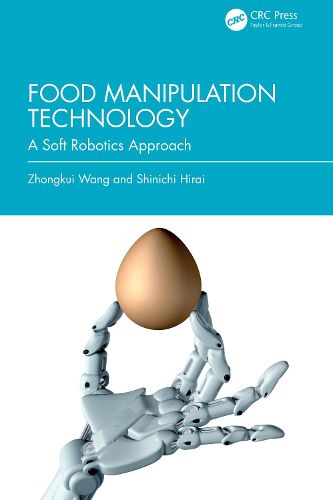Readings Newsletter
Become a Readings Member to make your shopping experience even easier.
Sign in or sign up for free!
You’re not far away from qualifying for FREE standard shipping within Australia
You’ve qualified for FREE standard shipping within Australia
The cart is loading…






Wang and Hirai draw on their extensive experience to introduce recent technological advances in soft robotics for food manipulation and discuss their practical applications in the food preparation industry. They also describe food modelling and categorization for the purpose of robotic handling.
Food manipulation is common in restaurants, kitchens, and food factories, but it currently largely relies on humans because of the lack of effective robotic systems. This book therefore explains recent manipulation technology for food handling and restaurant/kitchen automation, which is essential for food manipulation. The book covers the theoretical background of soft robotic hands; their application to different handling purposes in the food industry; their use in kitchen and restaurant automation; and their use for food recognition, property measuring, and modelling. The authors also present case studies of the development of soft robotic hands to illustrate the information and provide practical information that will be instructional for readers. Readers will gain an in-depth appreciation of the technology and its practical application to industry, which will enable them to implement this in their own work.
This book is an essential read for both food technology practitioners and graduate students who are interested in food manipulation and its related technologies. It gives readers the theoretical background knowledge and practical understanding to apply this cutting-edge technology in real-world settings.
$9.00 standard shipping within Australia
FREE standard shipping within Australia for orders over $100.00
Express & International shipping calculated at checkout
Wang and Hirai draw on their extensive experience to introduce recent technological advances in soft robotics for food manipulation and discuss their practical applications in the food preparation industry. They also describe food modelling and categorization for the purpose of robotic handling.
Food manipulation is common in restaurants, kitchens, and food factories, but it currently largely relies on humans because of the lack of effective robotic systems. This book therefore explains recent manipulation technology for food handling and restaurant/kitchen automation, which is essential for food manipulation. The book covers the theoretical background of soft robotic hands; their application to different handling purposes in the food industry; their use in kitchen and restaurant automation; and their use for food recognition, property measuring, and modelling. The authors also present case studies of the development of soft robotic hands to illustrate the information and provide practical information that will be instructional for readers. Readers will gain an in-depth appreciation of the technology and its practical application to industry, which will enable them to implement this in their own work.
This book is an essential read for both food technology practitioners and graduate students who are interested in food manipulation and its related technologies. It gives readers the theoretical background knowledge and practical understanding to apply this cutting-edge technology in real-world settings.